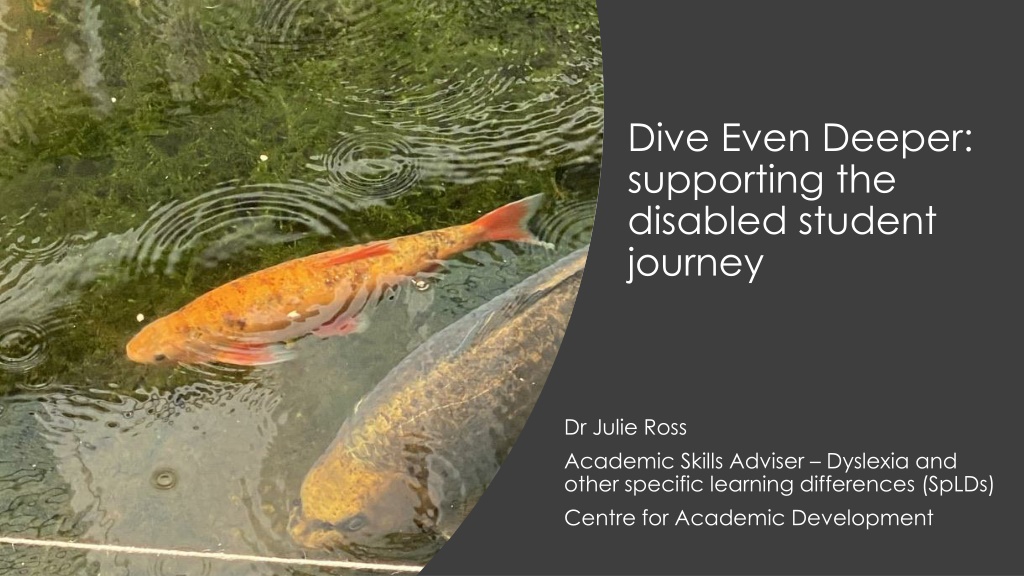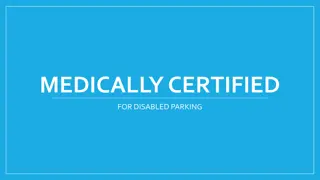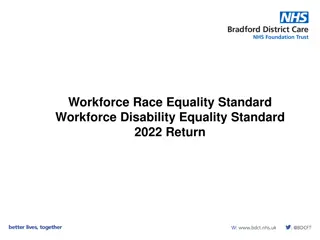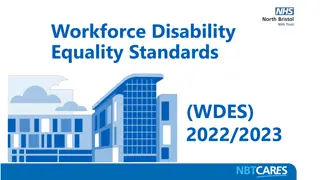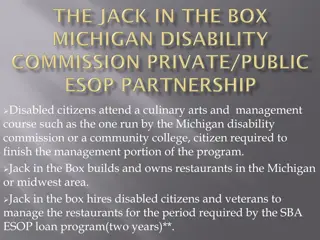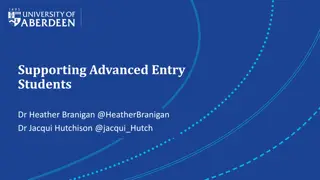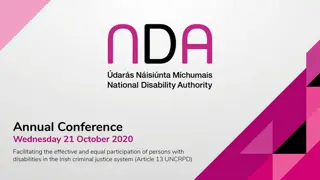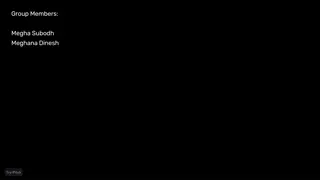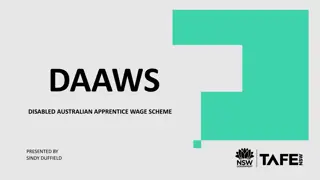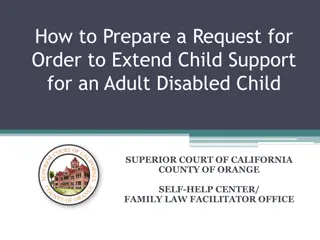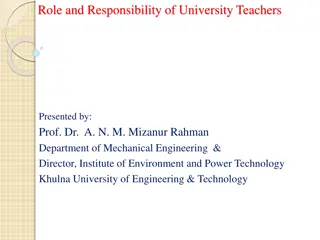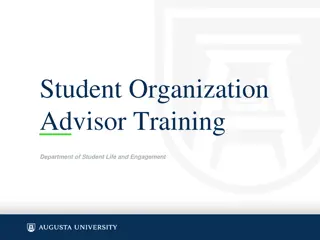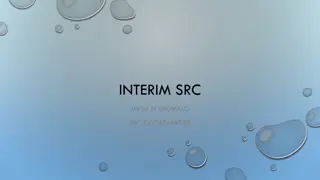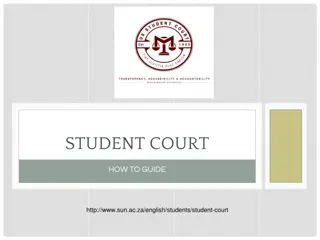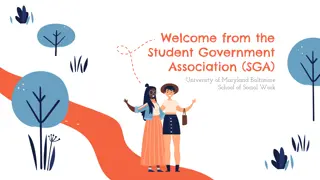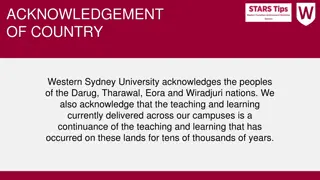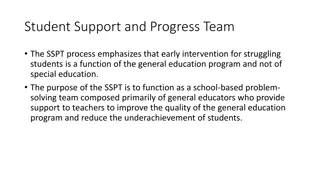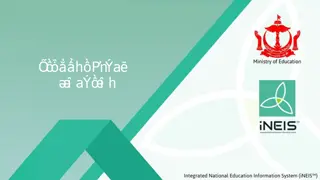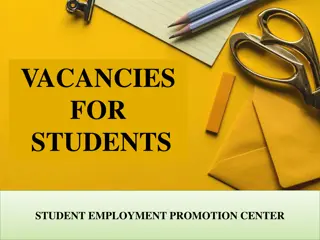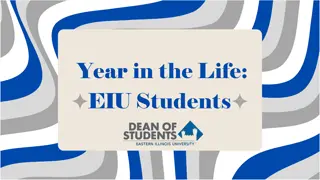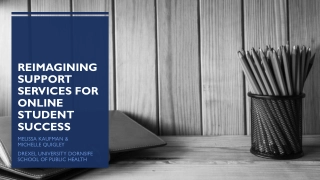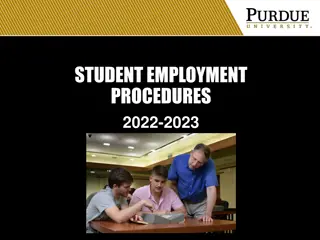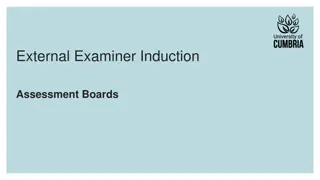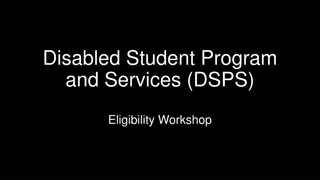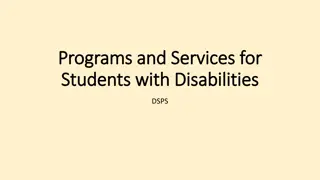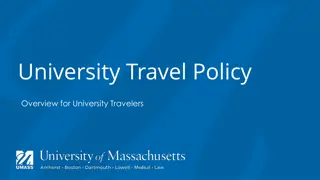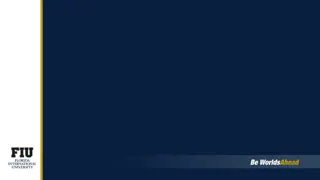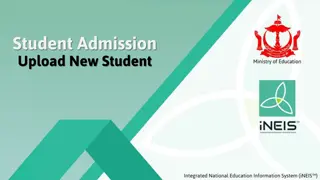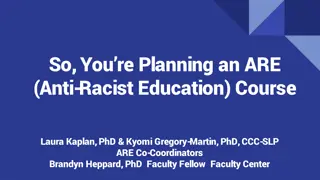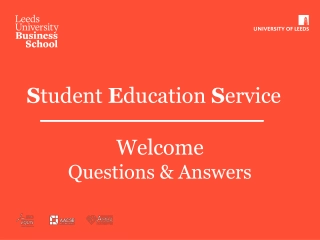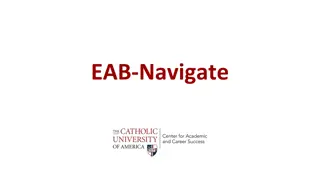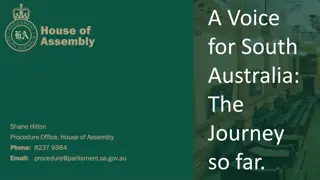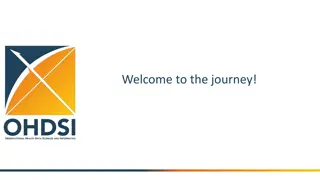Empowering the Disabled Student Journey at University of Aberdeen
Supporting students with disabilities at the University of Aberdeen is a core focus, with a range of conditions such as dyslexia, mental health issues, and physical disabilities being recognized and accommodated. The importance of respecting neurodiversity, hidden disabilities, personal choices, and self-awareness is highlighted. Both students and staff members with disabilities are acknowledged, with specific statistics provided for undergraduate, postgraduate, and research postgraduate levels.
Download Presentation

Please find below an Image/Link to download the presentation.
The content on the website is provided AS IS for your information and personal use only. It may not be sold, licensed, or shared on other websites without obtaining consent from the author. Download presentation by click this link. If you encounter any issues during the download, it is possible that the publisher has removed the file from their server.
E N D
Presentation Transcript
Dive Even Deeper: supporting the disabled student journey Dr Julie Ross Academic Skills Adviser Dyslexia and other specific learning differences (SpLDs) Centre for Academic Development
A cartoon image of people thinking in different ways - a cog and lightbulb are above the two central figures respectively. Difference is the norm not the exception
Four cartoon figures in a line expressing different ways of thinking. These different ways f thinking are expressed as a symbol above their heads. These are, from left to right, a question mark, cogs, a lifgtbulb and an exclamation mark. Neurodiversity (neurological differences), physical and sensory differences are recognised and respected as a valuable part of human variation.
Not all disability is obvious Brain injuries, chronic fatigue syndrome, Crohn s disease, chronic pain, cystic fibrosis, diabetes, epilepsy, mental health conditions and specific learning differences/ neurodiversity (ADD/ADHD, autistic spectrum condition, dyslexia, dysgraphia, dyscalculia, dyspraxia etc.) are all examples of hidden disabilities.
Personal Choice and Self Awareness Not everyone will choose to disclose their disability. Not everyone with a disability wishes to see themselves as disabled. Some people might not be aware that they are disabled. There will be people who have never had the opportunity to be formally identified/diagnosed as having a disability.
University of Aberdeen 2020-21 11.4% of students and 4.9% of staff registered a disability Undergraduate 15% registered a disability 40% of whom have dyslexia or other specific learning differences (SpLDs), 25% mental health conditions, 10% unseen disabilities, 9% an unlisted disability, 7% multiple disabilities, 5% autistic spectrum condition, 2% wheel chair users/mobility difficulties, 1% blind/partially sighted and 1% deaf/hearing Impaired. Taught Post-graduate 6% registered disability 47% of whom have dyslexia or other specific learning differences (SpLDs), 14% unseen disabilities, 12% an unlisted disability, 11% mental health conditions, 8% multiple disabilities, 3% autistic spectrum condition, 2% wheel chair users/mobility difficulties, 3% deaf/hearing impaired and 1% blind/partially sighted. Research Post-graduate 6% registered a disability 49% of whom have dyslexia or other specific learning differences (SpLDs), 15% unseen disabilities, 10% an unlisted disability, 9% mental health conditions, 7% autistic spectrum condition, 5% multiple disabilities, 3% wheel chair users/mobility issues, 1% deaf/hearing impaired and 1% blind/partially sighted.
Models of Disability: which ones do we use, and when? We can choose different lenses to view disability: Medical Functional Social Affirmative
The current model of student disability support in Higher Education (Disabled Student s Leadership Group, 2017)
Ready to take the plunge... Creating an inclusive university requires an empathic approach. It anticipates the needs of disability when designing environments, products and services to create barrier free design.
Inclusive Learning Environment Embedding Universal Design for Learning (UDL) or similar pedagogical theories of inclusion within Curriculum Design Neutral accessible learning environments Granular - re-presents content in smaller units Portable - transferable across platforms Interactive and active - (not passive) Ubiquitous present, accessible and not time limited Authentic opportunity for genuine and personally significant learning experiences
CAD - Educational Development Two day course for new staff (has a section on equality, diversity and inclusion) Principles of Teaching and Learning in Higher Education (section on Specific Learning Differences and an introduction to Universal Design for Learning) Post Graduate Certificate in Higher Education Learning and Teaching Programme has sections that focus on inclusion in teaching with reference to Universal Design for Learning HEA fellowship applications
CAD - E-Learning Designing and Teaching an On-Line Course (DTOC) (Lite and full versions) Coordinating video captions for pre-recorded videos on Panopto from AI Media for students, as requested by Student Support Piloting automatic closed captions on Collaborate Providing written guidance on making learning material more accessible (Accessibility for Authors/Creators Toolkit, and eLearning pages Accessibility Tips for Staff, Inclusivity and Accessibility StaffNet pages). Currently developing guidance on how to make equations, diagrams, graphics more accessible Ensuring the Accessibility Statement on the public web site covers MyAberdeen, Panopto, mobile apps etc. Global Accessibility Awareness Day: Facilitating the Fix Your Content competition and providing school level accessibility reports for courses on MyAberdeen Preparing to launch Blackboard Assist on MyAberdeen which will highlight to students the various places they can seek support within the University and later include an Ally file converter for students to generate their own alternative formats Regular workshop Improving Accessibility on MyAberdeen Reporting to the University s Digital Accessibility Working Group to coordinate activities
CAD - Student Learning Service One to one academic skills advice sessions with specialists in Dyslexia and other Specific Learning Differences (for example: ADHD, Dyspraxia, Autistic Spectrum Condition) Bespoke workshops on Specific Learning Differences for students, academic and academic related staff teams. One to one academic skills advice sessions in Academic Writing, Maths and Academic/Study Skills. These are available through our on-line booking system. Achieve and Achieve + (on my-Aberdeen) accessible on-line resources on Academic/Study skills, Academic Writing, Online Learning and Maths. Workshops on Academic Writing, Maths, on-line learning and Academic/Study skills
References CAST http://udloncampus.cast.org/page/udl_landing Disabled Students Sector Leadership (2017) Inclusive Teaching and Learning in Higher Education as a route to Excellence report Swain & French (2000) Towards an Affirmation Model of Disability, Disability & Society, 15:4, 569- 582, DOI: 10.1080/09687590050058189 Trainer, D. (2017) The Journey Towards Universal Design for Learning and the Provision of Reasonable Accommodations to Students with Disabilities in Higher Education in Ireland. Dublin: Trinity College. Trainer, D. (2017), A Review of Inclusive Practices in Education and Employment Practices in The AHEAD Journal, Issue 5, May 2017 Accessed 22.10.19 https://www.ahead.ie/journal/The-journey-toward-Universal-Design-for-Learning-and-the-Provision-of- Reasonable-Accommodations-to-Students-with-Disabilities-in-Higher-Education-in-Ireland
Legal definition of disability A person (P) has a disability if (a) P has a physical or mental impairment, and (b) the impairment has a substantial and long-term adverse effect on P's ability to carry out normal day-to- day activities. (The Equality Act, 2010)
Disability an impairment can be: Permanent static or progressive Intermittent Temporary
